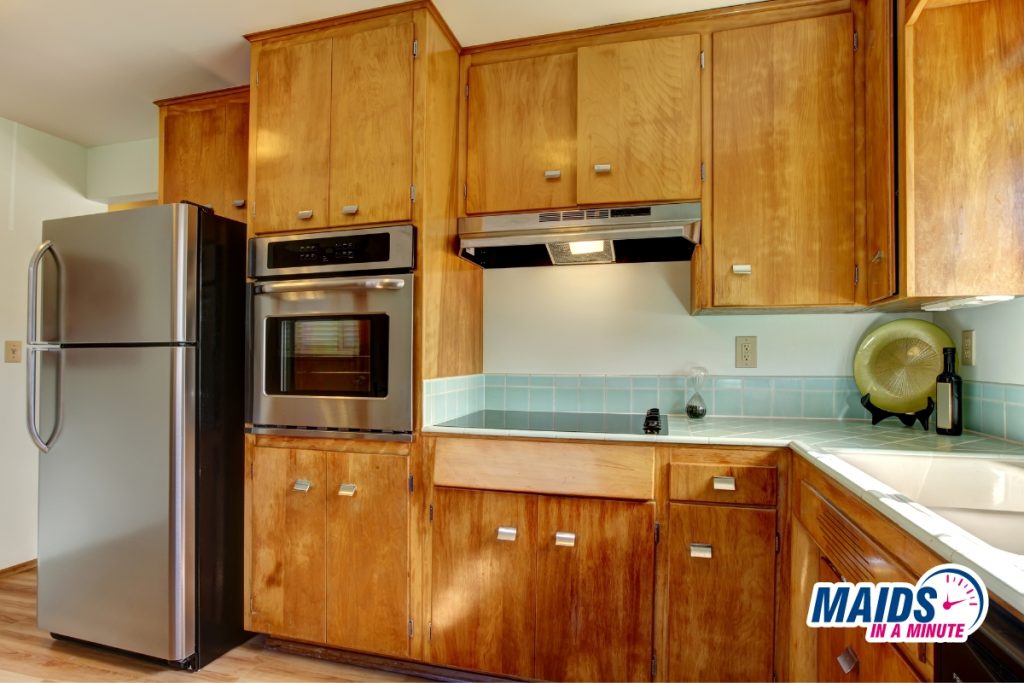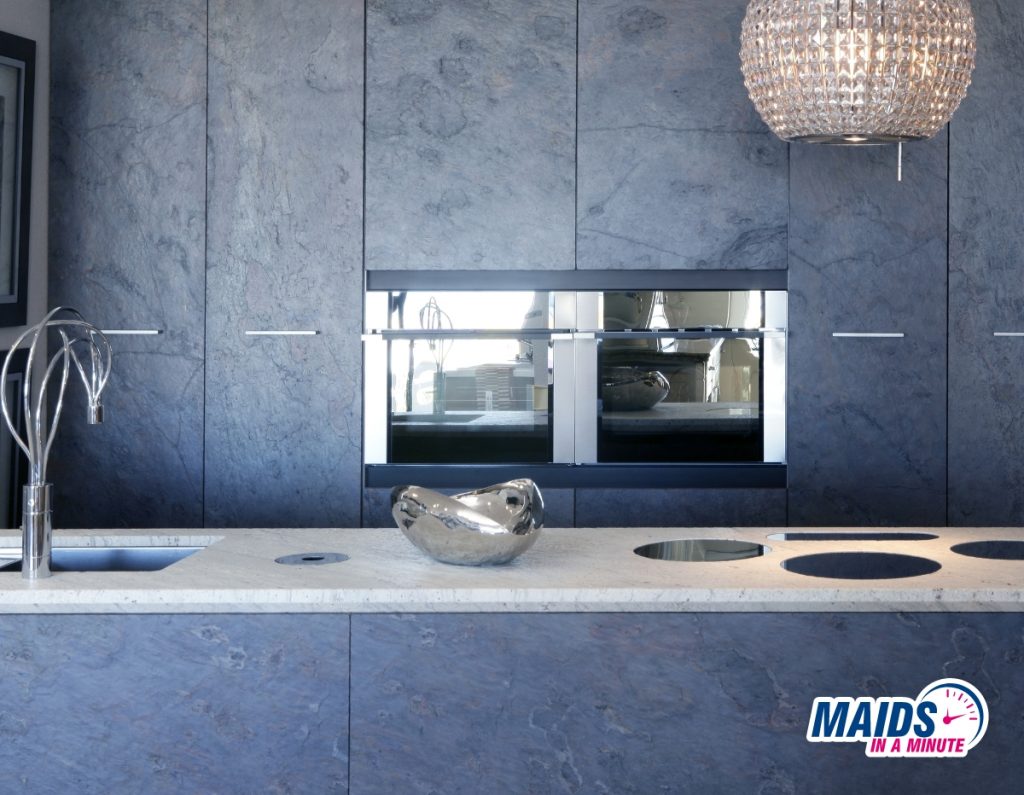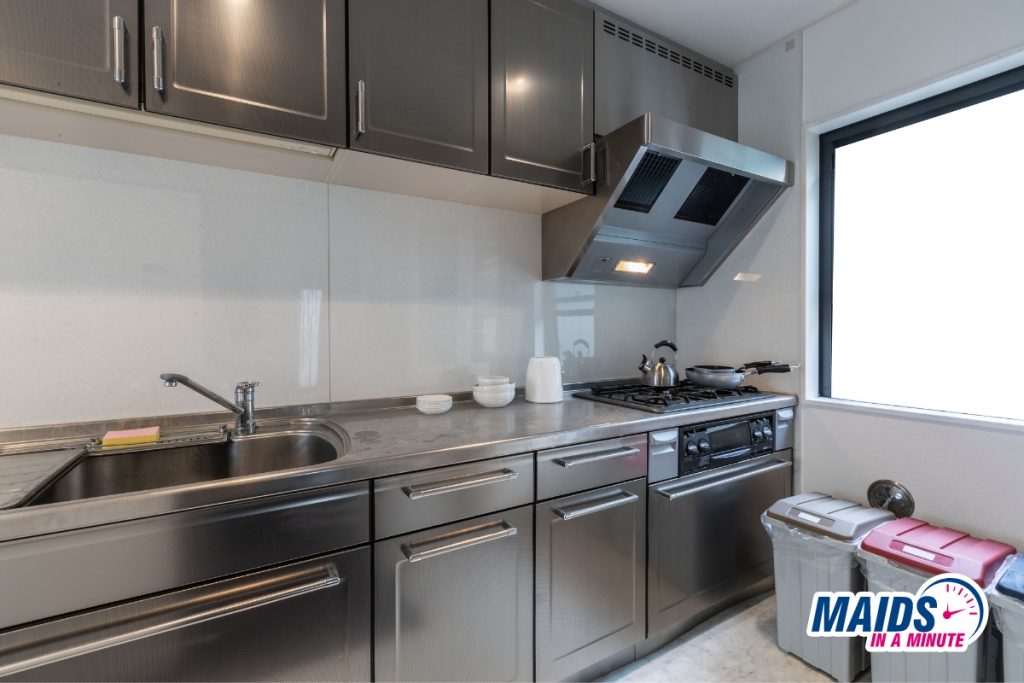
As a trusted home cleaning company, we’ve encountered cabinets of all shapes, sizes, and finishes in our quest for pristine kitchens. We’ve honed our expertise and developed foolproof methods for each cabinet type, ensuring a thorough cleaning without any damage.
In this blog post, we’ll take you on a journey through the cleaning process for four common types of kitchen cabinets. From traditional wood to sleek laminate, we’ll provide you with expert guidance and insider tips to make your cabinets gleam like new.
But here’s the best part: we’ll share our deep experience and expertise, revealing the most effective cleaning products and techniques for each cabinet type. Say goodbye to trial and error, and hello to a customized cleaning approach that will deliver remarkable results.
Why cleaning kitchen cabinets is essential
Kitchen cabinets can get splattered with food and grease and stay dirty for weeks or months. Gross, right? However, besides affecting the aspect of the cabinets, buildup grime can damage the materials and finish.
The finish of your cabinets is the last layer on the surface, and it gives them a nice look, like wood stain or paint. It’s important to keep it clean because dirt and grime could easily damage some types of finishes.
Also, food splatters and grease stains are the perfect home for bacteria. Most homeowners leave this task until it’s time to deep clean the whole kitchen—and that habit might need to change.
How often should you clean the kitchen cabinets?
If you use the kitchen regularly, food residue and steam could reach every spot in the room. Tackling this chore at least every two weeks will keep them in good condition. Frequent in-depth cleaning is unnecessary. However, you can use a towel or microfiber cloth every other day to remove dirt before it accumulates.

The first step: choosing a cleaner
The cleaning supplies and tools you need to clean your kitchen cabinets depend on their material. For example, a glass cleaner might be enough to wipe down a glass door, while it may fall short to clean a wood surface.
For a greener option, vinegar and baking soda could work, but ensure they are not too abrasive for the cabinet’s finish. If you are not sure if a cleaner is safe for your cabinets, test it first on a small portion of the surface.
How do you clean kitchen cabinets without removing the finish?
This should be a priority when cleaning any furniture—especially if they are wood cabinets. Avoid any harsh chemical cleaner or abrasive scrubber. If the grime is not so thick, you could use a soft sponge or cloth to scrub the surface gently. You could use an abrasive baking soda and water paste for thicker grease stains, but try it with gentler cleaners first.
What should I use to clean my cabinets?
This is a list of the basic cleaning supplies you can use for kitchen cabinet cleaning:
- All-purpose cleaner
- Dish soap and water
- Vinegar and water in equal parts
- Glass cleaner
- Baking soda and water paste (use it only on stubborn grime)
The best way to clean kitchen cabinets by material
In this section, we tell you the best way to clean each type of kitchen cabinet, according to their material:
- Wood kitchen cabinets
- Laminate kitchen cabinets
- Glass kitchen cabinets
- Metal kitchen cabinets

Cleaning wood kitchen cabinets
- What is the best cleaner for wooden kitchen cabinets? It depends on the finish. Wood finish can vary drastically, and some of them are more vulnerable to cleaning products than others. If you don’t know which is the best cleaner for your cabinets, start with a mild option—most likely dish soap and water. Test it in a small and discreet part of the surface. If the finish doesn’t react, go with it.
- Dip a soft sponge or cloth in the cleaner product you chose and wipe the cabinet surface. Excess water can harm the wood, so try to keep the sponge or cloth damp and not wet.
- If the cabinet has intricate hardware or crevices, use a toothbrush dipped in the cleaner to scrub the narrow spaces.
- Using a dry cloth, wipe and remove the cleaner from the surfaces.
- How can you clean sticky grease off kitchen cabinets? It could be a problem if abrasive cleaners aren’t an option. Spot clean any tough grease stain or grime with baking soda paste. Remember to test how the finish reacts before applying it!
- Remove the cleaner and dry the cabinet with a clean cloth.

Cleaning laminate kitchen cabinets
- Laminate is usually resistant to cleaning products. Nonetheless, we recommend testing the cleaner before using it. You could use an all-purpose cleaner or mix vinegar and water in equal parts for a greener option.
- Spray the cleaner and use a non-abrasive cloth or sponge to wipe it down.
- If tough stains are a problem, scrub them with a paste of baking soda and water. Then, scrub it gently with a soft-bristled brush to avoid damage to the surface.
- Lastly, dry it thoroughly with another cloth, as moisture can discolor and damage the laminate!

Cleaning glass cabinets
- Most glass cabinets also have wood or laminate. Use the appropriate cleaner for every type of material.
- To clean the glass, spray the glass cleaner you usually use and wipe it with a microfiber cloth. Don’t use soapy water and paper towels, or you’ll likely deal with streaks!
- For an eco-friendly DIY glass cleaner, you can mix vinegar and water in equal parts.

Cleaning metal cabinets
- Most metal kitchen cabinets are made of stainless steel. Consider the finish before using abrasive cleaners. If the cabinet is not heavily soiled, you could use soapy water with a soft sponge to clean the entire cabinet.
- You can use vinegar and a soft cloth to remove grime and grease stains. Or you can opt for alcohol, if the stains are really tough to clean. Spray the cleaning solution directly on the dirty spots and scrub them gently with a cloth until the surface is clean.
- If you find rust in the kitchen cabinet, you might need to scrub it with an abrasive sponge (only if it isn’t stainless steel). Take care of not using too much force to avoid damage.
- Use a damp sponge to rinse the cabinet. Then, dry it using a clean cloth.
- You could also wipe the surfaces with glass cleaner as the last step.
Did you know that the kitchen cabinets are part of our 54 Point Check-List? We can clean your entire kitchen so you can relax! Check out the best Southeast Michigan cleaning service on our website!
